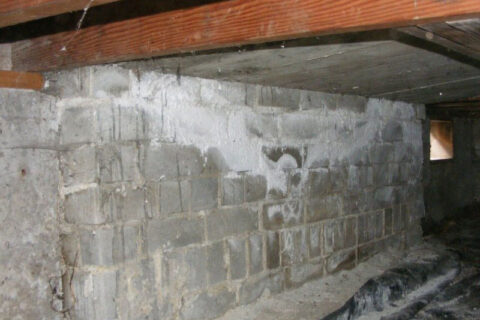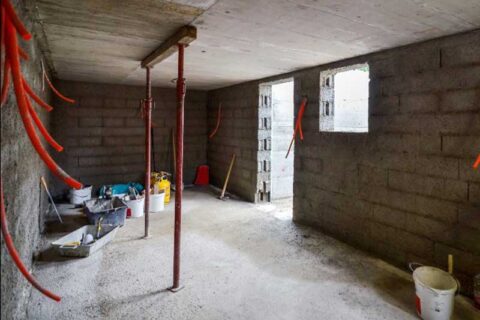Diagnosing Concrete Cracks
Any crack in your foundation is never a good thing. Some are structural cracks caused by settlement issues in the soil while others are simply allowing water into your basement. With concrete, it is not a matter of “if” it will crack it is a matter of “when.” Concrete naturally expands and shrinks with the freeze/thaw cycles. Tree roots, hydrostatic pressure, erosion, and settlement, can all cause cracks in foundation walls. Foundation Repair contractors learn to diagnose concrete foundation cracks to determine what is truly causing the cracks and the severity of the problem.
Vertical Cracks
Vertical cracks are generally non-structural cracks. They usually are seen with multiple cracks in one or more area along the basement wall. Vertical foundation cracks are often the least threat to the building. They are usually caused by the natural expansion and contraction of concrete. Through the years’ freeze-thaw cycles, the concrete expands and contracts causing the concrete to crack. When these vertical cracks are straight or slightly wandering and generally even in thickness, the risk is fairly low as far as affecting the structural integrity of the house. Nonstructural cracks can bring on another set of problems with water intrusion, soil gases, insects and other pests.
Horizontal Cracks
Generally, horizontal cracks are structural cracks usually caused from pressure building up on the opposite side of the wall from either an improper backfill or hydrostatic pressure. It could also be from cold climates with extreme freeze and thaw cycles.
Structural cracks are moving cracks. In order to fix a structural crack they need to be reinforced to prevent them from moving. Simply filling the structural cracks will not fix the problem if the wall is moving. A foundation repair system (whether interior or exterior anchors, carbon fiber, or beam systems) will work to stabilize the wall to prevent movement. Once the wall isn’t moving, then they can work to fix the cracks.
Cracks in Block Walls
Cracks in masonry blocks have to be handled differently from cracks in poured foundations and they trigger different problems and risks. If you have cracks in masonry blocks it usually signifies thermal movement or differential settlement. If there is an even crack through a masonry block wall either in the mortar joints or through the blocks, it is usually caused by shrinkage or thermal exposure. With these types of masonry cracks, the risk of the wall collapsing is low. The risk increases if you see stepped in brick especially near the ends of the wall. It is especially dangerous if the wall bond courses are broken. If you see a crack that is wider at the bottom than at the top in your block wall there may be a serious risk of collapse. If the masonry wall is bowing, then you should look into a foundation repair system or a masonry contractor who will rebuild and reinforce the wall.
Get the Whole Picture
While the cracks themselves can tell you a lot about what is truly causing the problem, there may be more to the story. If you have water in the basement, you have to inspect the foundation inside and out to determine the reason for the water. If you don’t go outside you may miss the grade sloping toward the house instead of away from it, or the puddle where the gutter dumps water when it rains. If you are inspecting structural problems in a house, the same rule applies. Look around the whole foundation inside and out to determine the real issues. While the main cracks signal a hydrostatic pressure problem, vertical cracks on the adjacent walls could mean there is a settlement problem. When diagnosing concrete cracks look for the clues to determine the cause in order to truly fix the problem for good.
Ready to Get Started?
Contact Us Today to Schedule a No Pressure, No Obligation, Free Quote!


